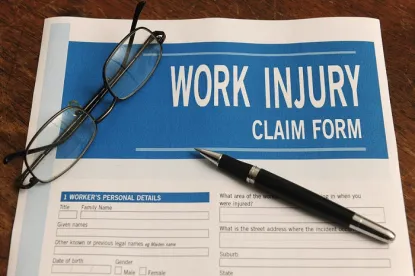Issues with the Mine Safety and Health Administration’s auditing of agency occupational injury and illness reporting mandates were exposed in a case in which an Administrative Law Judge threw out six citations because he said they failed to satisfy requirements of the regulation.
Under 30 CFR Part 50, mine operators must determine if occupational injuries and illnesses are reportable, and, if so submit a report to MSHA. Operators also are required to document the accident investigation on the agency’s 7000-1 form and submit it to MSHA within 10 working days of the event. These particular mandates fall under 50.11(b) and 50.20(a), respectively. Section 50.2(e) defines an occupational injury as one in which “medical treatment is administered, or which results in death or loss of consciousness, inability to perform all job duties on any day after an injury, temporary reassignment to other duties, or transfer to another job.”
MSHA conducts audits to verify the requirements are being followed using personnel from the agency’s Educational Field Services group. An MSHA team conducted an on-site audit at Northshore Mining Co. in November 2013. The audit team reviewed accident records, employee time sheets, and information from clinics, hospitals, and ambulance providers. The group also interviewed some miners at the operator’s Silver Bay facility in Minnesota. The team’s findings were then presented to individuals at the district office who were authorized to write citations. No team members were present when decisions about possible violations were made, a situation that left decisions to be made by individuals who lacked first hand knowledge. The inspector who ultimately issued the citations did not follow up on questions raised by the audit team.
Based on the audit, an MSHA inspector issued 11 citations, six for alleged violations of §50.11(b) and five under §50.20(a). Proposed fines totaled $1,185. Northshore contested 10 of the alleged violations, asserting they had not occurred, or, if they had, the proposed fines were inappropriate. (Sec’y of Labor v. Northshore Mining Co., No. Lake 2014-219-M, Oct. 21, 2015.)
Two citations were issued over an accident in which a railroad car repairman was struck on the head by taconite concentrate as he was welding inside a fan motor. He was taken to a clinic and then transported by ambulance to a hospital for more in-depth evaluation. The reviewing inspector wrote the citations based on his belief the employee had lost consciousness. He based his decision on information from the attending medical practitioner at the clinic, who stated the miner had a concussion and a “[p]robable loss of consciousness.” He was further influenced by the miner’s statements immediately after the accident about not having total recall of the events, experiencing confusion, and feeling “cobwebs in his head.”
However, Administrative Law Judge David Barbour vacated both citations after concluding MSHA had not established the miner had lost consciousness. In particular, he noted the miner testified he had not lost consciousness, a determination backed up by a note mentioning no loss of consciousness from the hospital’s attending physician, which the inspector did not have when he issued the citations. Further, Judge Barbour observed that the miner returned to duty without restrictions on his next regularly scheduled work day.
Judge Barbour also set aside two citations associated with a back injury sustained by a maintenance mechanic. MSHA had concluded the injury was reportable because the miner went to a chiropractor the day after the incident and did not work. But Barbour said the injury was not reportable because no evidence had been presented that the miner had received medical treatment. Nor did the judge consider the day the miner did not work as an absence due to occupational injury. The miner testified he reported for duty then, but left after being told the workload that day was light. “‘If the workload was heavy, I would have stayed,’ˮ he said, as quoted by the judge. Judge Barbour also was persuaded by the miner’s comment that, had he been too ill to work, he simply would have called in sick rather than endure the 60-mile commute to the mine.
Judge Barbour rejected MSHA’s allegation that Northshore had failed to report an occupational injury to a lube technician’s eye, which a physician treated by removing a foreign particle. MSHA’s guidelines state that a medical procedure is first aid if it is given for foreign bodies that remain on the surface of the eye, but medical treatment if the matter becomes embedded. Since the record did not definitively point one way or the other, the injury was not reportable, the judge ruled.
However, Barbour upheld two citations that involved a back sprain incurred by a warehouse technician based on evidence the injury was reportable because it had caused her to miss two days of work. Likewise, he sustained citations involving a crusher operator who had been treated for lip lacerations. The attending physician had recommended stitches to close one of the cuts, but the miner opted for an adhesive bandage instead. Under MSHA guidelines, if sutures are used, the injury is reportable. Barbour noted that the recommended treatment had been sutures, and said he considered the adhesive to be an equivalent procedure. Moreover, he said that MSHA considers bandages used for non-cosmetic purposes to constitute “medical treatment.” The fine was set at $534.
As evident in this case, MSHA’s Part 50 auditing process can subject operators to erroneous allegations of underreporting because officials making enforcement-related decisions are removed from direct engagement in the process and, thus, are susceptible to mistaken conclusions. Operators faced with a Part 50 audit are advised to monitor MSHA’s work carefully during the audit, including documents requested, interviews conducted, and conclusions reached by the audit team. If citations are issued by MSHA, operators should review them closely to determine the accuracy of the allegations.




 />i
/>i

